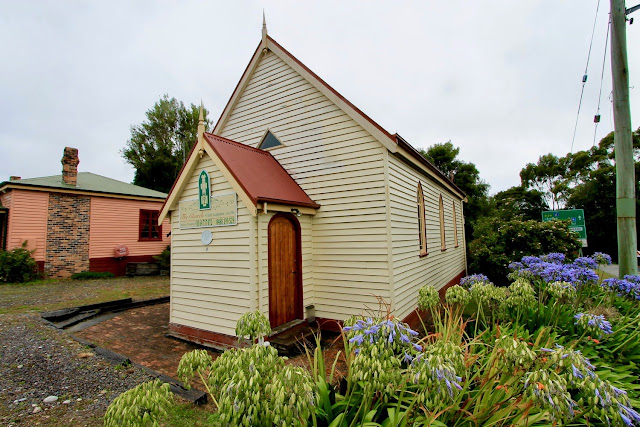No. 485 - Meander Baptist Church

Meander is a small town about 20km south of Deloraine. The town dates back to the late 19th century when the area was informally known as East and West Meander. In 1900 a township near the present town of Meander was surveyed but this was never developed. The proposed town was to called be Cheshunt Town after the nearby Cheshunt Estate. The present town of Meander was planned and laid out a short distance away and gazetted in 1907. Three denominations were established here including Methodist, Anglican and Baptist. The Baptists were active at Meander for about a decade before the church opened in December 1914. Meetings were held in local homes but the congregation grew to such an extent that a large tent had to be erected to accomodate about 100 people for the harvest festival held at the home of Mr Herbert Harris in April 1914. The opening of the new church was reported by the Launceston Examiner: “The opening services in connection with the new Baptist Church were conducted by the R...










